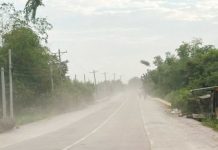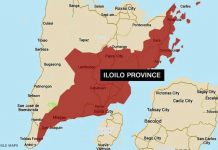
[av_one_full first min_height=” vertical_alignment=” space=” custom_margin=” margin=’0px’ padding=’0px’ border=” border_color=” radius=’0px’ background_color=” src=” background_position=’top left’ background_repeat=’no-repeat’ animation=”]
[av_heading heading=’ No more red tide in Carles’ Gigantes group of islands ‘ tag=’h3′ style=’blockquote modern-quote’ size=” subheading_active=’subheading_below’ subheading_size=’15’ padding=’10’ color=” custom_font=”]
BY GLENDA SOLOGASTOA
[/av_heading]
[av_textblock size=” font_color=” color=”]
ILOILO – The waters of the Gigantes group of islands in Carles town are now red tide-free.
Recent laboratory analysis on shellfish samples from the islands showed these did not anymore have paralytic shellfish poison, according to the Bureau of Fisheries and Aquatic Resources (BFAR).
The gathering of samples and analysis went for three consecutive weeks, BFAR’s Oct. 12 shellfish advisory stated.
Now, shellfish from Gigantes are safe for human consumption, according to BFAR undersecretary for Fisheries Eduardo Gongona.
“Gathering and/or harvesting, and marketing of shellfishes harvested from the (area) are now permitted, too,” he added.
On Sept. 30, the Sangguniang Bayan of Carles placed four barangays – Asluman, Gabi, Lantangan, and Granada – in the Gigantes group of islands under a state of calamity due to red tide that began in August.
Around 2,500 households in the villages depend on the sea for their food and livelihood. They have been displaced, said Mayor Sigfriedo Betita.
On Sept. 27, officials of Carles led by Betita had a meeting with Gov. Arthur Defensor Sr. at the capitol together with BFAR-6 director Remia Aparri. They discussed immediate and long-term interventions to assist red tide-affected fisherfolk.
In Asluman and Gabi alone, according to Betita, the livelihood of “85 percent” of residents was gathering scallops. They have been displaced.
Scallops were saltwater clams popular in restaurants.
Carles’ scallops were being exported. A kilo cost P110.
Betita estimated his municipality’s loses due to red tide reaching “millions” of pesos./PN
[/av_textblock]
[/av_one_full]







